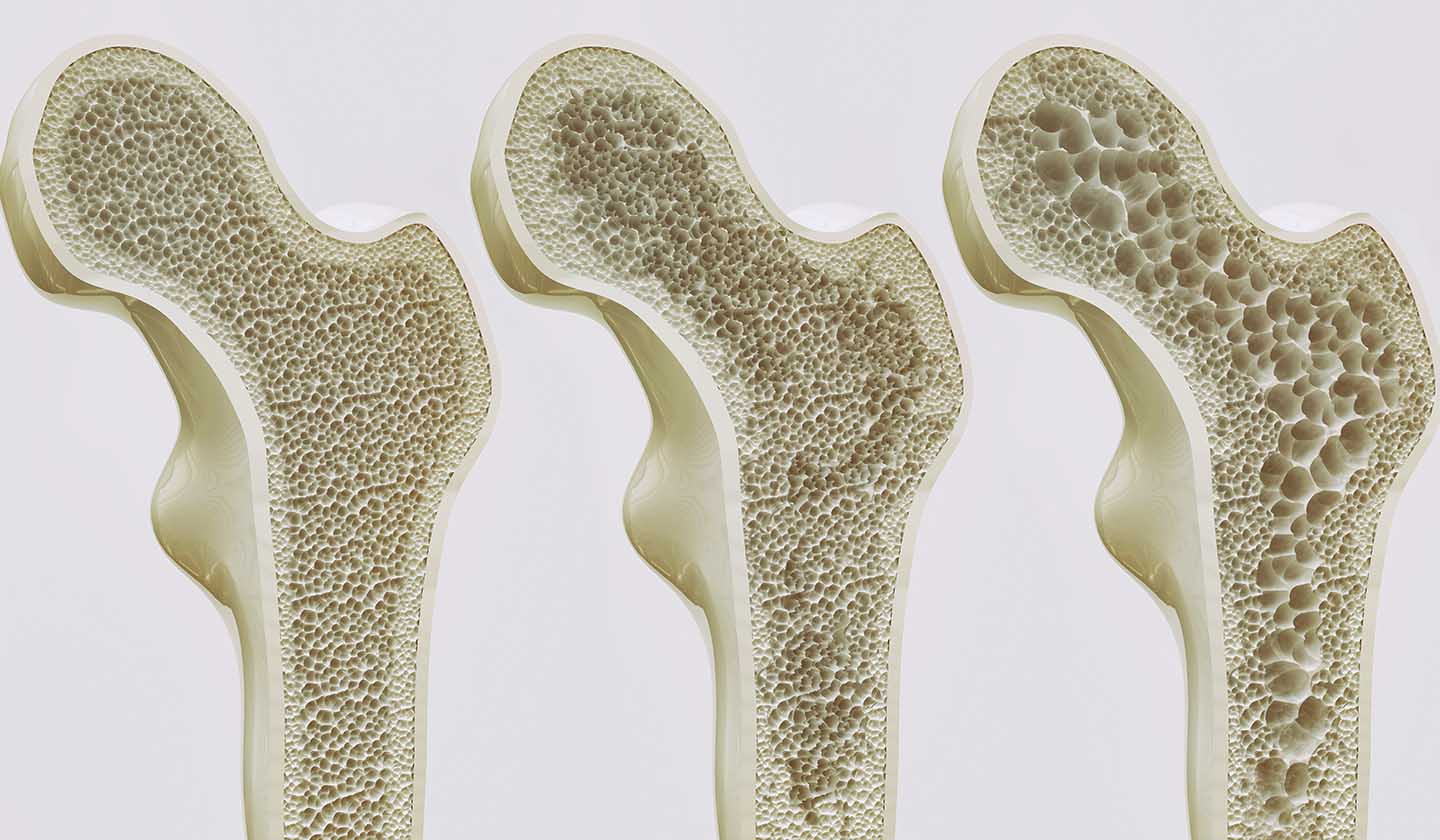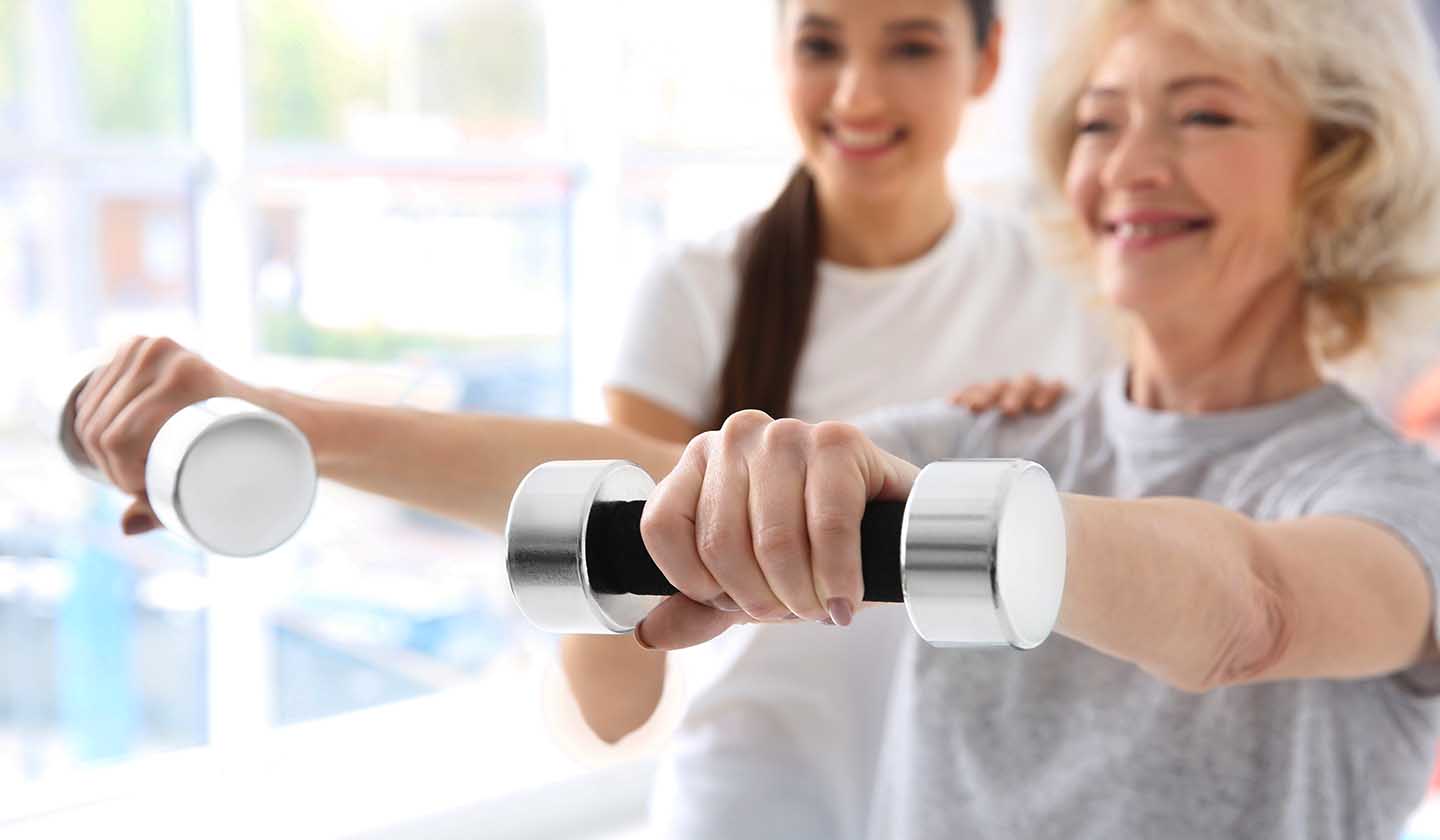Musculoskeletal system
Osteoporosis - When bones look like crystal

Osteoporosis is a progressive bone disease where a decrease in bone density occurs, making bones thinner and more fragile, leading to fractures.
Women are more at risk of osteoporosis than men, particularly after menopause, however this condition can also affect men and women over 65 years old.
Postmenopausal women are considered as the main risk group due to the decrease in oestrogen levels that makes bones more porous. Because men usually have larger bones, they are less susceptible to fractures.
Main risk factors
-
Gender - with a predominance of women;
-
Age - aging causes decrease in bone density;
-
Low body mass index;
-
Family history of osteoporosis;
-
High alcohol intake;
-
Smoking;
-
Diseases - rheumatoid arthritis;
-
Drugs - can accelerate the disease progression, such as cortisone derivatives.
When symptoms appear, the disease is already at an advanced stage. Height decrease, spinal curvature and abdominal bulge may occur. The main warning sign is the occurrence of fractures caused by minor injuries.
Aside from the increased risk of fractures associated with osteoporosis, other problems, such as chronic pain, bone malformations and loss of quality of life, can also occur.
The most common sites for fractures in an osteoporosis patient are the femoral neck, vertebrae, and wrist bones.
The diagnosis of osteoporosis is made through a test, called bone densitometry, that scans bone density.
Bone densitometry is recommended to:
-
Women over 65 years old;
-
Women between menopause and 65 years old;
-
Women with risk factors, such as family history of osteoporosis, low body mass index;
-
Men and women at any age who have suffered a fragility fracture.

How to prevent osteoporosis
-
Intake of the recommended daily amounts of calcium and vitamin D, either by eating rich foods or taking food supplements;
-
Moderate sun exposure - solar rays help to produce vitamin D, which is essential for calcium absorption in the intestines;
-
Maintaining a good body mass index by practicing physical activity, as this helps to strengthen bones and muscles;
-
Prevent accidental falls
-
Adopt a good postural care on a daily basis;
-
Cut down on or cut off caffeinated and alcoholic drinks, and smoking.

Treatment
Treating osteoporosis involves using prescription medicinal products, therefore a doctor should be sought in order to evaluate which is the most appropriate pharmacological treatment to apply.
-
Use of medicines that reduce bone resorption by our body, increasing its density, bisphosphonates;
-
In the case of postmenopausal women, hormone replacement therapy to relieve the associated menopausal symptoms;
-
Painkillers that help to reduce the pain associated with the disease;
-
Calcium supplements combined with vitamin D.
As we get older, the need to make our lives more practical and safer requires us to adopt some measures. And we must not be ashamed of it! A fall in an older person, whether or not they have osteoporosis, can cause loss of autonomy and a decrease in quality of life. Therefore, prevention is the best remedy!

Useful tips on how to prevent falls
-
Wear anti-slip and not very high-heeled shoes;
-
Remove all the mats that do not stick well to the floor and that can easily lead to slipping;
-
Adapt the bathroom to your condition, especially in the bathtub area where slip and fall accidents are more common.
-
When you get out of bed at night, do it slowly and always turn on the light.
Sources
iSaúde
Farmácia Distribuição Magazine
Também lhe poderá interessar
Neurology
The mystery of dying neurons
Urinary tract






